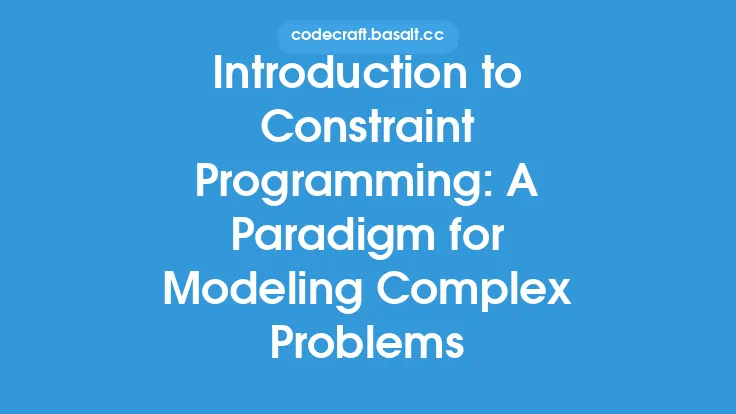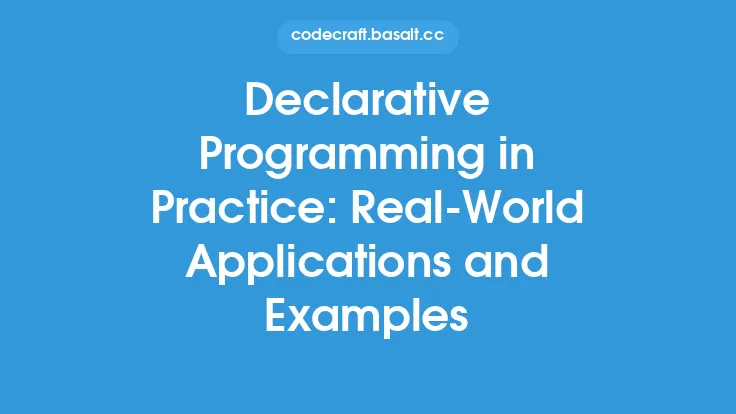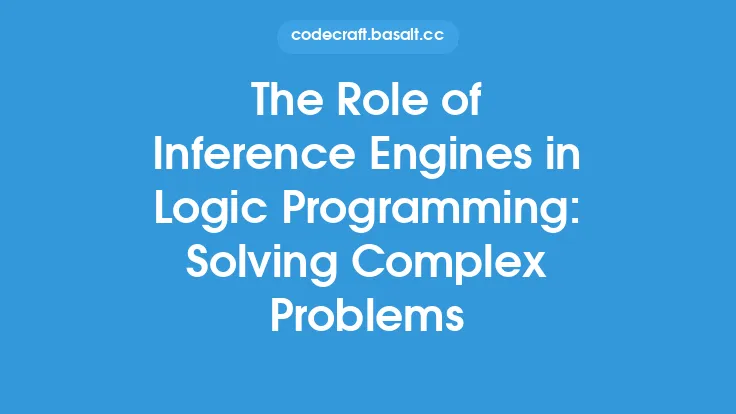Modeling real-world problems is a crucial aspect of constraint programming, as it allows developers to represent complex systems and find solutions that satisfy a set of constraints. This process involves identifying the key variables, constraints, and objectives of the problem, and then using constraint programming techniques to find a solution that meets the requirements. In this article, we will delve into the details of modeling and solving real-world problems with constraint programming, exploring the various techniques and tools used in this field.
Introduction to Modeling
Modeling is the process of creating a mathematical representation of a real-world problem, using variables, constraints, and objectives to capture the key aspects of the system. In constraint programming, modeling involves identifying the decision variables, which are the variables that can be adjusted to achieve the desired outcome. These variables are typically represented as a set of finite domain variables, each with a specific domain of possible values. The constraints, on the other hand, represent the limitations and restrictions of the problem, and are used to filter out solutions that are not feasible.
Types of Constraints
Constraints are a fundamental component of constraint programming, and can be categorized into several types. The most common types of constraints are:
- Unary constraints: These constraints involve a single variable and restrict its domain to a specific set of values.
- Binary constraints: These constraints involve two variables and restrict the possible combinations of values that they can take.
- Ternary constraints: These constraints involve three variables and restrict the possible combinations of values that they can take.
- Global constraints: These constraints involve multiple variables and restrict the possible combinations of values that they can take.
Each type of constraint has its own strengths and weaknesses, and the choice of which type to use depends on the specific problem being modeled.
Modeling Techniques
There are several modeling techniques used in constraint programming, each with its own advantages and disadvantages. Some of the most common techniques include:
- Modeling with variables: This involves representing the problem using a set of variables, each with a specific domain of possible values.
- Modeling with constraints: This involves representing the problem using a set of constraints, each of which restricts the possible values of the variables.
- Modeling with objectives: This involves representing the problem using a set of objectives, each of which represents a goal or target that the solution should achieve.
Each modeling technique has its own strengths and weaknesses, and the choice of which technique to use depends on the specific problem being modeled.
Solving Techniques
Once a problem has been modeled, the next step is to solve it using a constraint programming solver. There are several solving techniques used in constraint programming, each with its own advantages and disadvantages. Some of the most common techniques include:
- Constraint propagation: This involves using the constraints to reduce the domain of the variables, by eliminating values that are not consistent with the constraints.
- Search: This involves using a search algorithm to explore the possible solutions, and to find a solution that satisfies the constraints.
- Local search: This involves using a local search algorithm to explore the possible solutions, and to find a solution that satisfies the constraints.
Each solving technique has its own strengths and weaknesses, and the choice of which technique to use depends on the specific problem being solved.
Applications of Constraint Programming
Constraint programming has a wide range of applications, including:
- Scheduling: Constraint programming can be used to schedule tasks and resources, to minimize delays and maximize efficiency.
- Resource allocation: Constraint programming can be used to allocate resources, such as personnel, equipment, and materials, to maximize efficiency and minimize waste.
- Supply chain management: Constraint programming can be used to manage supply chains, to minimize delays and maximize efficiency.
- Financial modeling: Constraint programming can be used to model financial systems, to predict outcomes and optimize performance.
Each application has its own unique challenges and requirements, and the use of constraint programming can help to solve these problems in a efficient and effective way.
Tools and Languages
There are several tools and languages available for constraint programming, each with its own strengths and weaknesses. Some of the most common tools and languages include:
- OPL: OPL is a modeling language that is used to model and solve constraint programming problems.
- CPLEX: CPLEX is a constraint programming solver that is used to solve linear and integer programming problems.
- Gecode: Gecode is a constraint programming library that is used to model and solve constraint programming problems.
- MiniZinc: MiniZinc is a modeling language that is used to model and solve constraint programming problems.
Each tool and language has its own unique features and capabilities, and the choice of which one to use depends on the specific problem being solved.
Conclusion
Modeling and solving real-world problems with constraint programming is a complex and challenging task, but it can be done using a variety of techniques and tools. By understanding the different types of constraints, modeling techniques, and solving techniques, developers can create effective models and solutions that meet the requirements of the problem. Additionally, the use of constraint programming can help to solve a wide range of problems, from scheduling and resource allocation to supply chain management and financial modeling. As the field of constraint programming continues to evolve, we can expect to see new and innovative applications of this technology, and the development of new tools and languages to support it.





